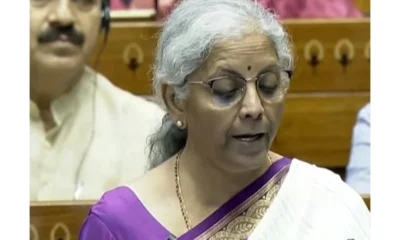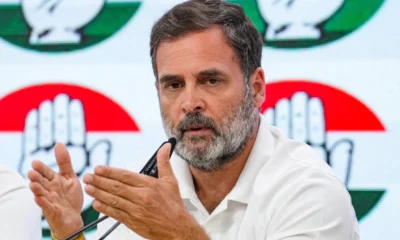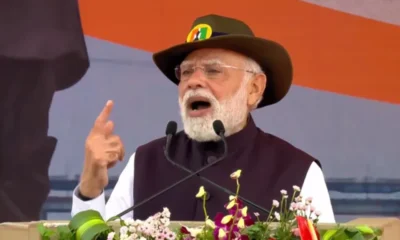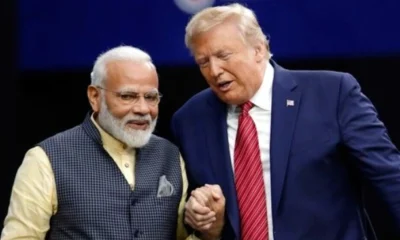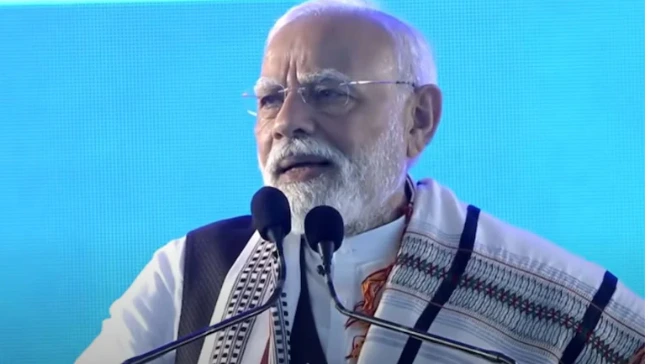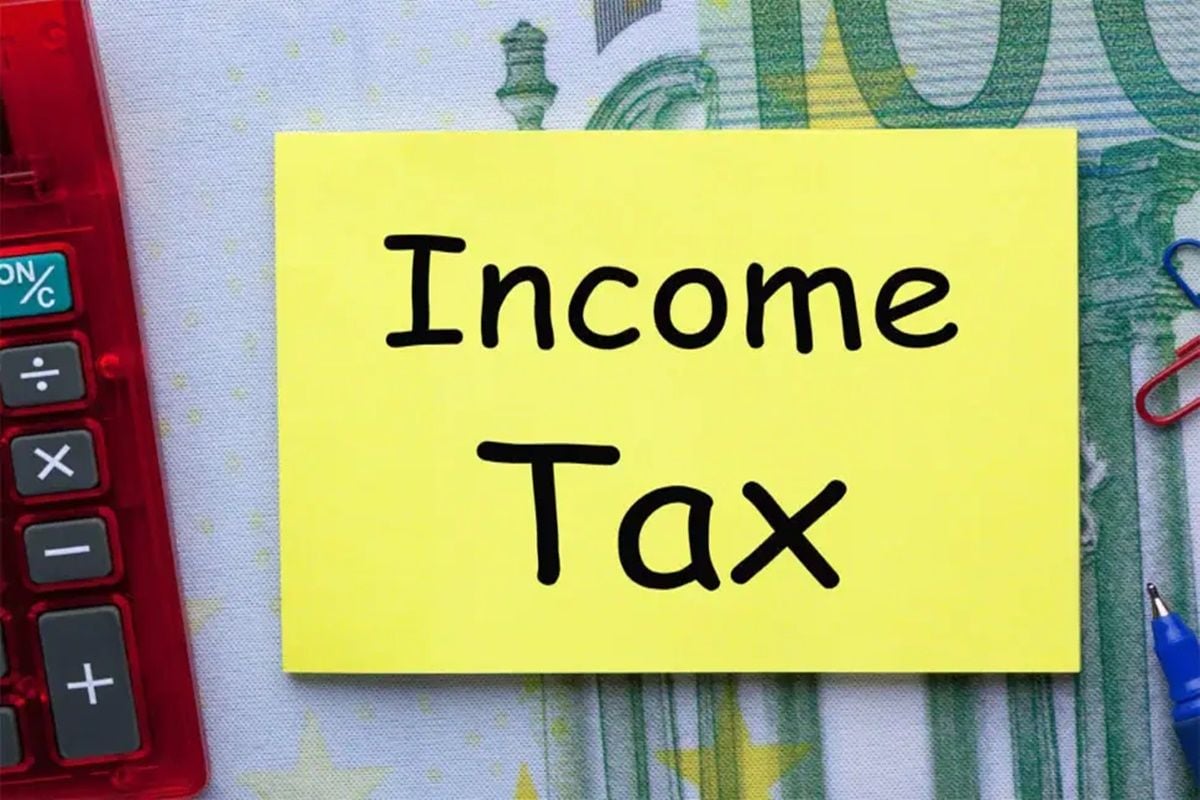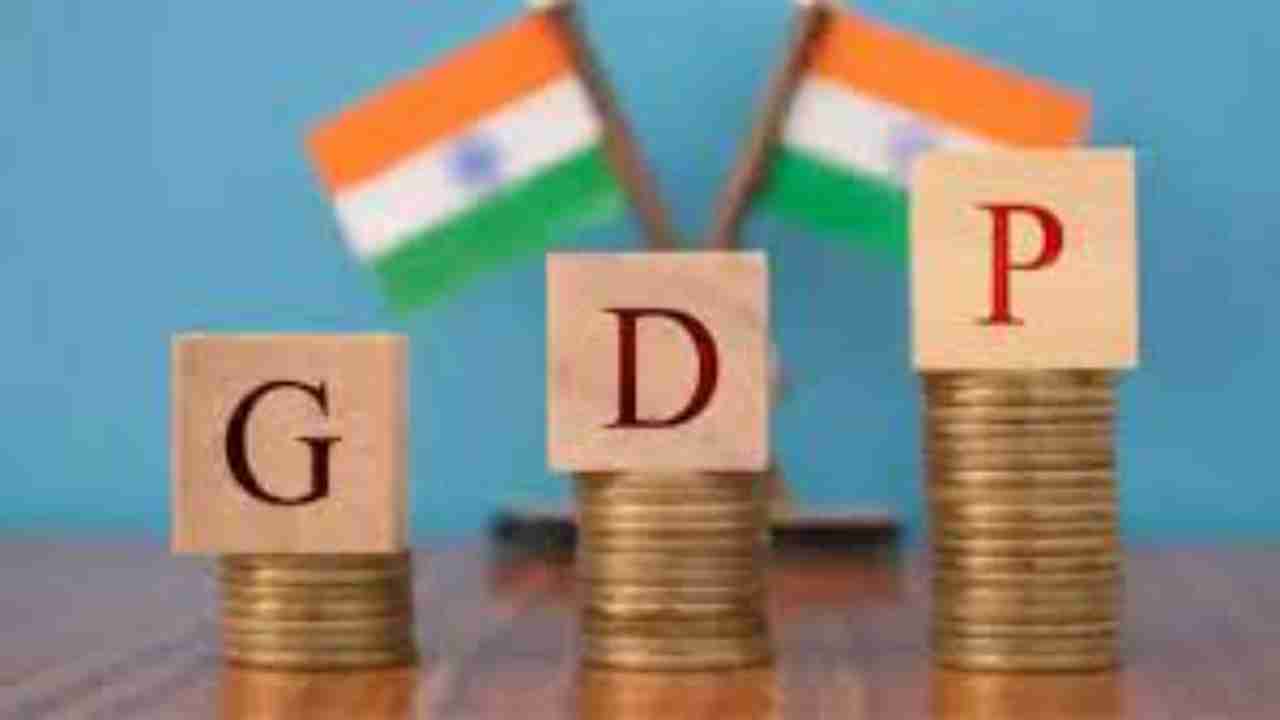[vc_row][vc_column][vc_column_text]The upgrade that came after 13 years sent the Sensex soaring
A day after Pew Research survey report about overwhelming popularity of Prime Minister Narendra Modi and general satisfaction with the state of the country, global rating agency Moody’s Investors Service gave another piece of news to put him in good mood.
After 13 years, Moody’s Investors Service (“Moody’s”) has upgraded the Government of India’s local and foreign currency issuer ratings to Baa2 from Baa3 and changed the outlook on the rating to stable from positive.
The improvement in rating was greeted with jubilation in the government and sent the bank stocks soaring.
India’s sovereign credit rating was last upgraded in January 2004 to Baa3 (from Ba1), said the Government of India (GoI) in a statement released on Friday.
Welcoming the upgrade, the government said that “as rightly noted by the Moody’s” this was in recognition of major economic and institutional reforms undertaken by Government of India.
Listing the steps, the GoI said, “These reforms include introduction of path breaking Goods and Services Tax (GST); putting in place a sound monetary policy framework; measures taken to address recapitalisation of public sector banks and a number of measures taken to bring formalisation and digitalisation (The JAM agenda) in the economy – demonetisation, the Aadhaar system of biometric accounts and targeted delivery of benefits through the Direct Benefit Transfer (DBT) system.”
Moody’s statement had also said: “Key elements of the reform program include the recently-introduced Goods and Services Tax (GST) which will, among other things, promote productivity by removing barriers to interstate trade; improvements to the monetary policy framework; measures to address the overhang of non-performing loans (NPLs) in the banking system; and measures such as demonetisation, the Aadhaar system of biometric accounts and targeted delivery of benefits through the Direct Benefit Transfer (DBT) system intended to reduce informality in the economy.”
The GoI statement said Moody’s have also rightly recognised the Government’s commitment to macro stability which has led to low inflation, declining deficit and prudent external balance and Government’s fiscal consolidation programme which has resulted in a reduction of fiscal deficits from 4.5% of GDP in 2013-14 to 3.5% in 2016-17 and its consequential sobering impact on general government debt.
“Government intends to stay the course on fiscal consolidation in the medium term,” the statement added.
Union Finance Minister Arun Jaitley, addressing the media, said, “It is a recognition and an endorsement of the reform process that has gone on in the country, particularly in the last 3-4 years, where a number of structural reforms have taken place, placing India on a path of high trajectory growth.”
“It is also a recognition that India’s continues to follow a path of fiscal prudence that has brought rock stability to the economy,” he said, asserting, “The fact that a series of steps, including demonetisation, which are now taking the Indian economy to a greater formalisation and digitisation are something that is now being universally acknowledged.”
He said all the steps were according to a plan. “’Introduction of platforms like Aadhaar, extremely important steps like bankruptcy code, re-capitalisation of banks, setting up of statutory mechanism in terms of monetary policy committee, and most importantly smooth transition of GST… All these steps are directional in implementing economic reforms. All our steps follow a particular road map,” he said.
He claimed the government’s track record in the past three years “has been one of the better records in Indian history as far as fiscal discipline is concerned, and we intend to move on that track.”
He said this was not a one-off thing. “For three years, India is among the fastest growing economies. In the World Bank ranking, we have moved up in ‘ease of doing business’. These are no small achievements,” said Jaitley.
He took a dig at his critics saying, “Many who had doubts in their minds about India’s reform process would now seriously introspect on their positions itself.”
“GST has opened the door for farmers and traders to sell their products throughout the country. Demonetisation has increased cashless transactions,” he said, mentioning the two most criticised steps of the government.
He also said that the government plan to recapitalise the banking sector has also helped the economy to get back on track.
“Fiscal prudence has helped India to get Moody’s upgrade,” the finance minister said.
Bank stocks on Friday rose by up to 6 % after the US-based Moody’s upgraded India’s sovereign credit rating by a notch to ‘Baa2’ with a stable outlook, according to media reports.
Shares of PNB surged 6 %, Bank of Baroda soared 5.17 %, Yes Bank gained 4.16 %, SBI (3.91 %) and ICICI Bank (3.55 %) on BSE. The scrip of Axis Bank gained 2.64 % and HDFC Bank went up by 1.18 %. The BSE bank index also rose by 1.90 % to trade at 29,450.39, reports said.
The broader market also cheered the news as the BSE Sensex jumped 331.72 points to trade at 33,438.54.[/vc_column_text][/vc_column][/vc_row]


 India News23 hours ago
India News23 hours ago
 India News17 hours ago
India News17 hours ago
 India News22 hours ago
India News22 hours ago
 Cricket news22 hours ago
Cricket news22 hours ago
 India News21 hours ago
India News21 hours ago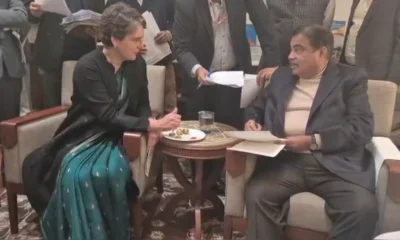
 India News16 hours ago
India News16 hours ago
 Latest world news16 hours ago
Latest world news16 hours ago


